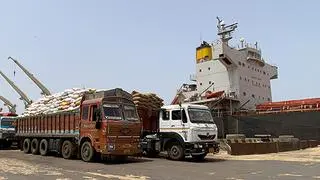The Intergovernmental Panel on Climate Change (IPCC) published its Climate Report ‘Impacts, Adaptation and Vulnerability’ this week — the second part of its Sixth Assessment Report, Climate Change 2022.
The report indicates that the world faces unavoidable multiple climate hazards over the next two decades with global warming of 1.5°C. Even temporarily exceeding this warming level will result in additional severe impacts, some of which will be irreversible. Risks for society will increase, including to infrastructure and low-lying coastal settlements.
It provides new scientific evidence on climate risk and solutions making a case for ambitious adaptation actions. It provides a gloomy reminder that the world is facing imminent, large scale and irreversible climate risks.
It makes it clear that the global community has a huge responsibility and must go further and faster to adapt to the impacts of climate change and address the vulnerabilities. The poor and the marginalised are bearing the costs of inaction or limited action and this is an injustice to humanity. The report highlights that promises to date have not been met and the urgency is not realised to bring transformative action at scale to respond to the climate emergency.
The strength of this WG 2 report lies in providing evidence with higher confidence levels for different types of risks associated with various regions and sectors (health, food and infrastructure etc.) under various climate scenarios (1.5°C, 2°C, 4°C). Compared to the previous assessment in 2014, this report clearly establishes the fact that the risk transitions are going to be high to very high level even at lower global warming levels, which is a serious matter of concern.
Nature’s solutions
This report provides new and deep insights into nature’s potential not only to reduce climate risks but also to improve human well-being. Flooding is a recurring problem across cities with the intensity and frequency of rainfalls increasing over the years. The report advocates solutions that have blue-green components built in to manage climate risks and to have a long-lasting effect.
This report throws light on adaptation responses undertaken in all regions and sectors. There is clear indication that local level adaptation actions undertaken by individuals, households and communities in rural and urban areas to manage climate induced risks on food and livelihoods, especially in the Asian and African contexts have good outcomes.
The report highlights the huge gap in implementation responses channelled through formal institutional mechanisms. The role of mal-adaptation (e.g. building seawalls to control sea level rise) and the trade-offs between short term vs long term adaptation solutions have been discussed widely to demonstrate how vulnerabilities are exacerbated .
The investigations reveal that even ambitious adaptation cannot fully prevent climate risks from increasing, because of the impacts of residual risks, risk that remains after controls are accounted for and the limits to adaptation. Adaptation actions fall behind or prove ineffective in circumstances if mitigation actions do not provide desired outcomes. WG2 report acknowledges that severe climate risks will likely be higher, last longer and occur both sooner and at larger scales.
Implications for policy and science
It is critical to assess how adaptation measures can also lead to potential counterproductive effects (maladaptation). There is a dire need to understand the trade-offs between today’s action and tomorrow’s consequences. Adaptation actions have to be guided by both sound science and knowledge of local communities.
We need to use effective Monitoring, Evaluation and Learning (MEL) tools to track adaptation success across scales.
The WG2 assessment brings forward an important policy dimension to adaptation. In the context of adaptation, the scientific community has to be sensitive to different facets of human adaptation, behavioural aspects and above all the local realities. The science-policy interface is the bottom line to make adaptation work across scales.
Adaptation policies also need to prepare to integrate systemic risk (i.e. cascading, compounding and transboundary across sectors, jurisdictions and populations) from climate hazards as well as related responses, both within and across borders.
Implications for India
Adaptation and resilience building measures today largely fall into the domain of sub-national governments.
The adaptation measures in place today are not adequate and this report is a stark reminder to ramp up our investments in terms of capacities, financial resources and building responsive institutions, supported by sound policy measures both at the national and sub-national levels.
There is no dearth of ideas and policies. The gap lies in implementation. Locally led adaptation holds the key for reducing climate vulnerability. There cannot be a better vehicle than the Mahatma Gandhi Rural Employment Guarantee Scheme to promote adaptation in India.
The components built into MNREGS can resurrect nature and secure livelihoods. The funding for adaptation actions are very low. It is imperative that additional money is pumped into resilience building programmes more systematically.
The writer is Director, Climate Resilience Practice, WRI-India








Comments
Comments have to be in English, and in full sentences. They cannot be abusive or personal. Please abide by our community guidelines for posting your comments.
We have migrated to a new commenting platform. If you are already a registered user of TheHindu Businessline and logged in, you may continue to engage with our articles. If you do not have an account please register and login to post comments. Users can access their older comments by logging into their accounts on Vuukle.